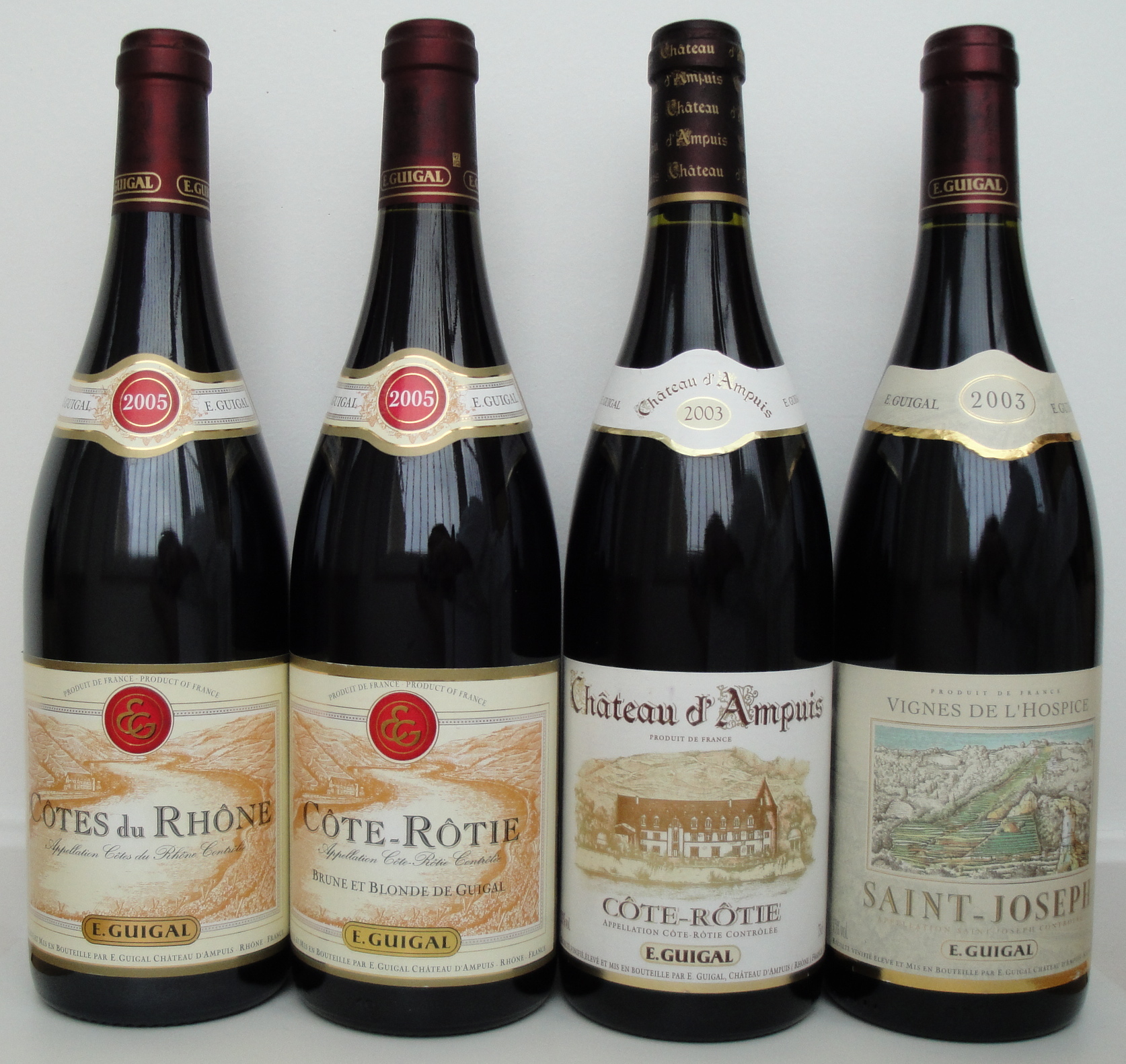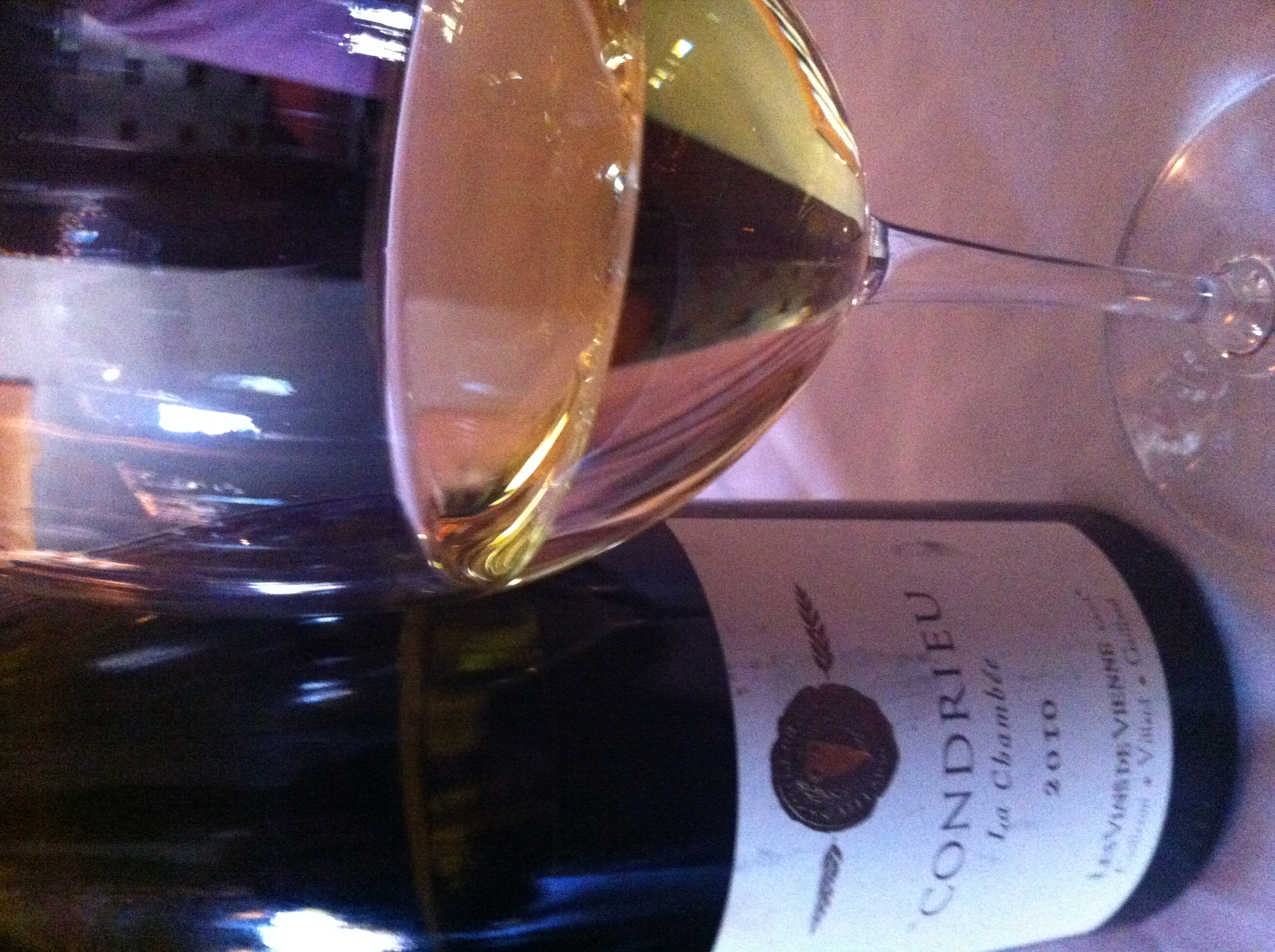|
Guigal
Guigal, formally ''Établissements Guigal'', is a winery and négociant business situated in Ampuis in the northern part of the Rhône region in France. Guigal produces wine from appellations across the Rhône region, but is particularly noted for their Côte-Rôtie wines and played a pioneering role in improving Côte-Rôtie's international reputation. Guigal's single vineyard wines ''La Mouline'', ''La Landonne'' and ''La Turque'' (sometimes referred to collectively as "La La's") are internationally renowned. In 2007, the release of the 2003 vintage of Guigal's "La La" wines set the record for most expensive release of any Rhone wine, with bottles retailing for as much as $800.J. Molesworth 'Guigal Sets Price Record for Rhône'' Wine Spectator, Feb 8th, 2007 History Guigal was established in 1946 by Étienne Guigal, who had worked for Vidal Fleury for 15 years before setting up his own business. It has been managed by his son Marcel Guigal since 1961. In 1984, Guigal bought ... [...More Info...] [...Related Items...] OR: [Wikipedia] [Google] [Baidu] |
Condrieu AOC
Condrieu (; from the French ''coin de ruisseau,'' , )K. MacNeil ''The Wine Bible'' pp. 235–240 Workman Publishing 2001 is a French wine-growing ''Appellation d'Origine Contrôlée'' (AOC) located in the northern Rhône, near Vienne and to the south of the Côte-Rôtie AOC. The vineyards are situated in the seven communes of Limony, Chavanay, Malleval, Saint-Michel-sur-Rhône, Saint-Pierre-de Boeuf, Vérin, and Condrieu. These communes are in the French departments of Ardèche, Rhône and Loire on the steep slopes of the foothills of the Massif Central on the right bank of the Rhône. The four southernmost communes can also produce wine under the Saint-Joseph AOC. The wines made in this AOC are exclusively white, from the Viognier grape, which may have originated in the region. The smaller AOC of Château-Grillet is enclaved within Condrieu and produces wines that are also 100% Viognier. The Condrieu AOC was officially created in 1940. History Viticulture in the ... [...More Info...] [...Related Items...] OR: [Wikipedia] [Google] [Baidu] |
Saint-Joseph AOC
Saint-Joseph or St.-Joseph () is a French wine ''Appellation d'Origine Contrôlée'' (AOC) in the northern Rhône wine region of France. Though the appellation covers the largest amount of land, it is second in actual size under vine to Crozes-Hermitage, an appellation with which it shares much regarding style and prestige. St.-Joseph is primarily a red wine region, but also produces a white wine. The red is produced predominantly from the Syrah grape, but AOC regulations allow up to 10% of Marsanne or Roussanne. The white wine is made exclusively from the latter grape varieties. History Originally known as Vin de Mauves and mentioned in Victor Hugo's ''Les Misérables'', the wine from St.-Joseph was a favourite in the French court of Louis XII (1498–1515) who owned a vineyard in St.-Joseph known as Clos de Tournon. The first official record of vineyards in St. Joseph occurs in 1668. The appellation is named from a vineyard that was first named for Saint Joseph. This particula ... [...More Info...] [...Related Items...] OR: [Wikipedia] [Google] [Baidu] |
Winemaker
A winemaker or vintner is a person engaged in winemaking. They are generally employed by wineries or wine companies, where their work includes: *Cooperating with viticulturists *Monitoring the maturity of grapes to ensure their quality and to determine the correct time for harvest *Crushing and pressing grapes *Monitoring the settling of juice and the fermentation of grape material * Filtering the wine to remove remaining solids *Testing the quality of wine by tasting *Placing filtered wine in casks or tanks for storage and maturation *Preparing plans for bottling wine once it has matured *Making sure that quality is maintained when the wine is bottled Today, these duties require an increasing amount of scientific knowledge, since laboratory tests are gradually supplementing or replacing traditional methods. Winemakers can also be referred to as oenologists as they study oenology – the science of wine. Vintner A vintner is a wine merchant. In some modern use, particularl ... [...More Info...] [...Related Items...] OR: [Wikipedia] [Google] [Baidu] |
France
France, officially the French Republic, is a country located primarily in Western Europe. Overseas France, Its overseas regions and territories include French Guiana in South America, Saint Pierre and Miquelon in the Atlantic Ocean#North Atlantic, North Atlantic, the French West Indies, and List of islands of France, many islands in Oceania and the Indian Ocean, giving it Exclusive economic zone of France, one of the largest discontiguous exclusive economic zones in the world. Metropolitan France shares borders with Belgium and Luxembourg to the north; Germany to the northeast; Switzerland to the east; Italy and Monaco to the southeast; Andorra and Spain to the south; and a maritime border with the United Kingdom to the northwest. Its metropolitan area extends from the Rhine to the Atlantic Ocean and from the Mediterranean Sea to the English Channel and the North Sea. Its Regions of France, eighteen integral regions—five of which are overseas—span a combined area of and hav ... [...More Info...] [...Related Items...] OR: [Wikipedia] [Google] [Baidu] |
Appellation D'origine Contrôlée
In France, the ''appellation d'origine contrôlée'' (, ; abbr. AOC ) is a label that identifies an agricultural product whose stages of production and processing are carried out in a defined geographical area – the ''terroir'' – and using recognized and traditional know-how. The specificity of an AOC product is determined by the combination of a physical and biological environment with established production techniques transmitted within a human community. Together, these give the product its distinctive qualities. The defining technical and geographic factors are set forth in standards for each product, including wines, cheeses and meats. Other countries and the European Union have similar labeling systems. The European Union's protected designation of origin (PDO and PGI) system has harmonized the protection of all geographical indications and their registration. When labelling wine however, producers may still use recognized traditional terms like AOC, and are not requ ... [...More Info...] [...Related Items...] OR: [Wikipedia] [Google] [Baidu] |
Marsanne
Marsanne () is a white wine grape, most commonly found in the Northern Rhône region. It is often blended with Roussanne. In Savoie the grape is known as ''grosse roussette''. Outside France it is also grown in Switzerland (where it is known as ''ermitage blanc'' or just ''ermitage''), Spain (where it is known as ''Marsana''), Australia, New Zealand, Canada and the United States. Wine regions The grape most likely originated in the Northern Rhône region where it is widely planted today, more precisely in the village and abbey of Marsanne (Drôme). It is a principal component of the white wines from the Hermitage, Crozes-Hermitage and Saint-Joseph AOCs. It is the most widely planted white wine grape in the Hermitage AOC, where it is often blended with Roussanne. Along with Roussanne, up to 15% of Marsanne can be added to the red wine of Hermitage under ''Appellation d'origine contrôlée'' (AOC) regulations. In the Saint-Péray AOC, it is used for both still and sparkling ... [...More Info...] [...Related Items...] OR: [Wikipedia] [Google] [Baidu] |
Old Vine
Old vine (, ), a common description on wine labels, indicates that a wine is the product of grape vines that are notably old. There is a general belief that older vines, when properly handled, will give a better wine. There is no legal or generally agreed definition for ''old''. Usage Grape vines can grow for over 120 years. After about 20 years vines start to produce smaller crops, and average yields decrease; this leads to more concentrated, intense wines. Diseases such as " dead arm" can also afflict old vines; in some cases, this further concentrating the juice. "Old vines" might apply to an entire estate, or it might mean only a certain parcel planted before others. In the U.S., the most common use is on Zinfandel, because in California vineyards up to 125 years old are still bearing small amounts of prized Zinfandel fruit. In a place where wine production is longstanding, it often means a wine whose vines are thirty to forty years old. Some wine makers insist the vines s ... [...More Info...] [...Related Items...] OR: [Wikipedia] [Google] [Baidu] |
Tannins (wine)
Phenolic compounds— natural phenol and polyphenols—occur naturally in wine. These include a large group of several hundred chemical compounds that affect the taste, color and mouthfeel of wine. These compounds include phenolic acids, stilbenoids, flavonols, dihydroflavonols, anthocyanins, flavanol monomers (catechins) and flavanol polymers (proanthocyanidins). This large group of natural phenols can be broadly separated into two categories, flavonoids and non-flavonoids. Flavonoids include the anthocyanins and tannins which contribute to the color and mouthfeel of the wine. The non-flavonoids include the stilbenoids such as resveratrol and phenolic acids such as benzoic, caffeic and cinnamic acids. Origin of the phenolic compounds The natural phenols are not evenly distributed within the grape. Phenolic acids are largely present in the pulp, anthocyanins and stilbenoids in the skin, and other phenols (catechins, proanthocyanidins and flavonols) in the skin and th ... [...More Info...] [...Related Items...] OR: [Wikipedia] [Google] [Baidu] |
Monument Historique
() is a designation given to some national heritage sites in France. It may also refer to the state procedure in France by which national heritage protection is extended to a building, a specific part of a building, a collection of buildings, a garden, a bridge, or other structure, because of their importance to France's architectural and historical cultural heritage. Both public and privately owned structures may be listed in this way, as well as movable objects. there were 44,236 monuments listed. The term "classification" is reserved for designation performed by the French Ministry of Culture for a monument of national-level significance. Monuments of lesser significance may be "inscribed" by various regional entities. Buildings may be given the classification (or inscription) for either their exteriors or interiors. A monument's designation could be for a building's décor, its furniture, a single room, or even a staircase. An example is the classification of the déco ... [...More Info...] [...Related Items...] OR: [Wikipedia] [Google] [Baidu] |







